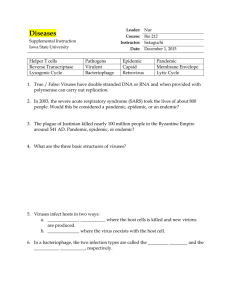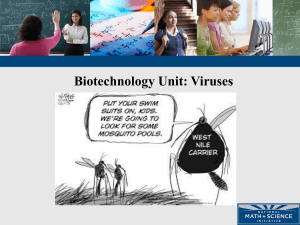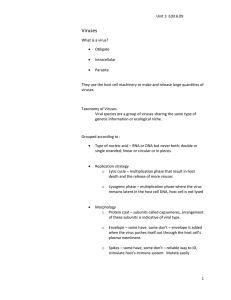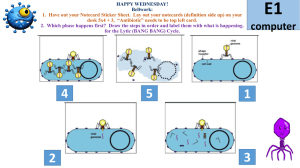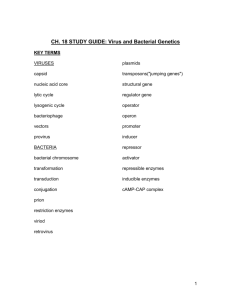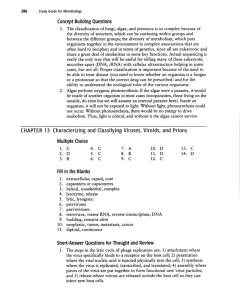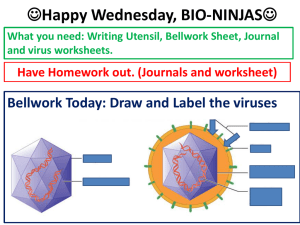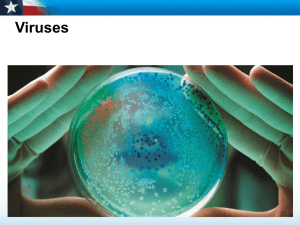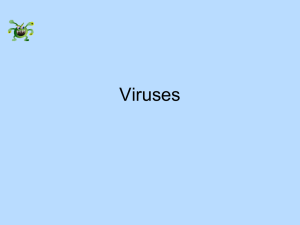virus
advertisement
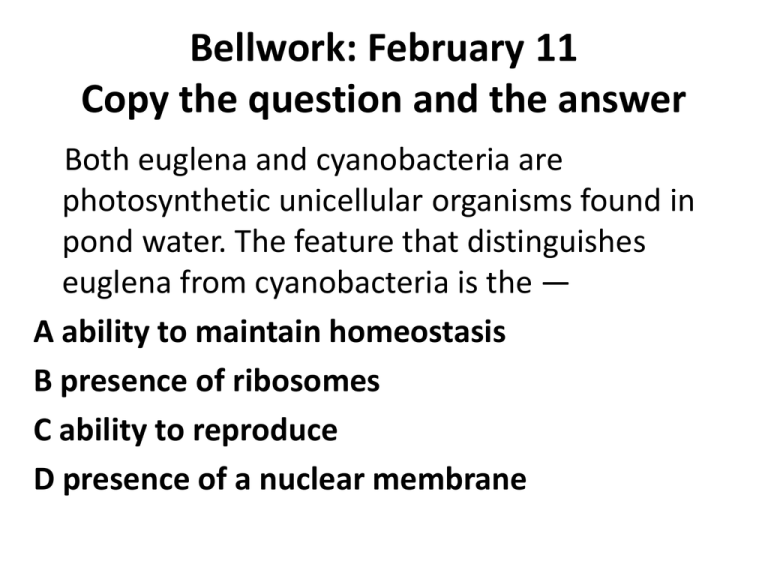
Bellwork: February 11 Copy the question and the answer Both euglena and cyanobacteria are photosynthetic unicellular organisms found in pond water. The feature that distinguishes euglena from cyanobacteria is the — A ability to maintain homeostasis B presence of ribosomes C ability to reproduce D presence of a nuclear membrane CO: I will describe viral reproduction. LO: I will write notes and talk about the steps in viral reproduction. I will build a virus. Science Fact of the Day: Corneas are the only tissues that don't require blood. OVERVIEW Quick Write: • Are viruses alive? • Explain why or why not. When a virus invades… A living thing that provides a source of energy for a virus or an organism VIRUS A tiny, nonliving structure that invades and then multiplies inside of a cell. A virus that immediately goes into action. It begins to take over cell functions and produce the virus’s proteins and genetic material. These parts then assemble into new viruses. The viruses multiply like a copy machine left on. When it is full the cell bursts open – releases the new viruses and dies. Organisms that live on or near a host and cause harm. Some viruses hide for a while and become part of the cell’s genetic material. It may stay inactive and “hidden” for years. Then under certain conditions it becomes active and acts like an active virus. Ex – cold sores Lytic Cycle •Active viruses enter cells and immediately begin to multiply, leading to the quick death of the invaded cells. •Steps to the lytic cycle: 1. Attach to cell 2. Inject DNA/RNA 3. Produce (replicate) virus parts 4. Assemble new virons 5. Release viruses to infect other cells - Viruses Lytic Cycle Lysogenic Cycle • Hidden viruses “hide” for a while inside host cells before becoming active 1. 2. 3. 4. 5. 6. Steps to the Lysogenic Cycle: Attach to cell Inject DNA/RNA Integrate DNA/RNA into cell Wait Remove DNA/RNA Become active (lytic cycle) - Viruses Lysogenic Cycle Rally Robin: Cycle Steps • Get into partners—decide who is partner A and who is partner B. –Partner A: Describe the steps for the Lytic cycle. –Partner B: Draw each step. • After a few minutes, we will switch to the Lysogenic Cycle and you will switch roles. Lytic Cycle Lysogenic Cycle Could viruses be helpful? - Since viruses can transport DNA and RNA into cells, scientists are exploring Gene Therapy - In Gene Therapy, viral genetic material is replaced with new DNA - In time, this could be used to cure genetic diseases. Currently we have no cure for these types of illnesses You decide…Lytic or Lysogenic Dengue Fever For spread of infection Thursday.. • Could we be the Last of Us?

